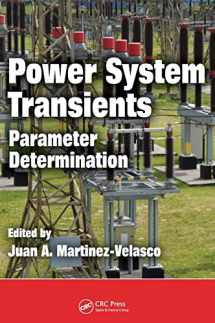
Power System Transients: Parameter Determination
Book details
Summary
Description
Despite the powerful numerical techniques and graphical user interfaces available in present software tools for power system transients, a lack of reliable tests and conversion procedures generally makes determination of parameters the most challenging part of creating a model.
Illustrates Parameter Determination for Real-World Applications
Geared toward both students and professionals with at least some basic knowledge of electromagnetic transient analysis, Power System Transients: Parameter Determination summarizes current procedures and techniques for the determination of transient parameters for six basic power components: overhead line, insulated cable, transformer, synchronous machine, surge arrester, and circuit breaker. An expansion on papers published in the IEEE Transactions on Power Delivery, this text helps those using transient simulation tools (e.g., EMTP-like tools) to select the optimal determination method for their particular model, and it addresses commonly encountered problems, including:
- Lack of information
- Testing setups and measurements that are not recognized in international standards
- Insufficient studies to validate models, mainly those used in high-frequency transients
- Current built-in models that do not cover all requirements
Illustrated with case studies, this book provides modeling guidelines for the selection of adequate representations for main components. It discusses how to collect the information needed to obtain model parameters and also reviews procedures for deriving them. Appendices summarize updated techniques for identifying linear systems from frequency responses and review capabilities and limitations of simulation tools. Emphasizing standards, this book is a clear and concise presentation of key aspects in creating an adequate and reliable transient model.


We would LOVE it if you could help us and other readers by reviewing the book
Book review



